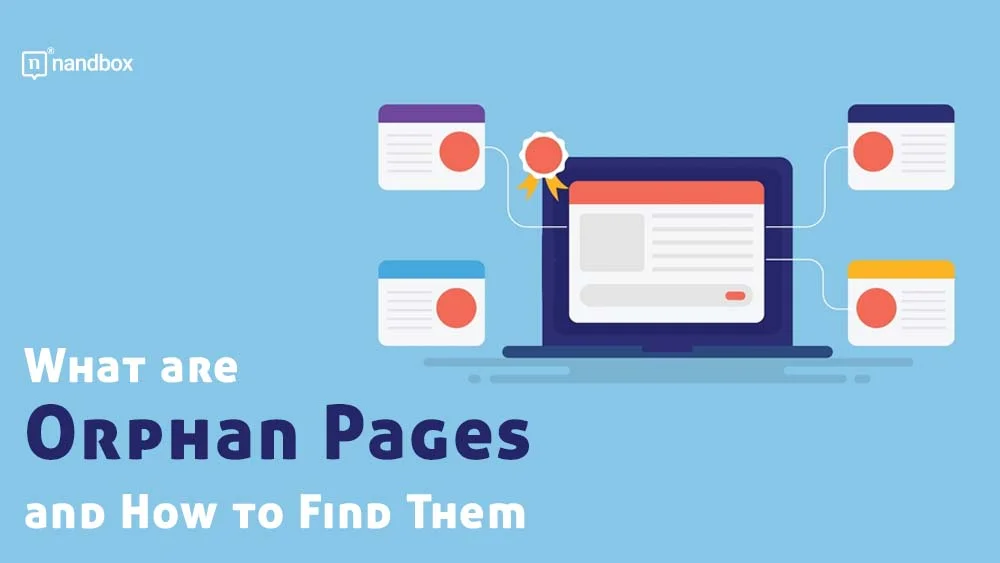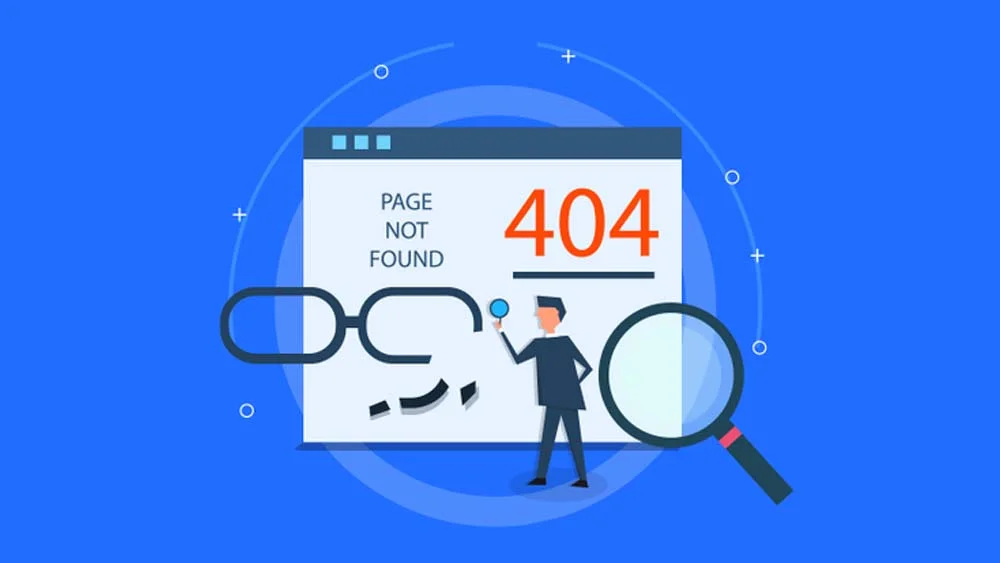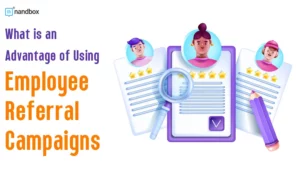The Search for Orphan Pages and Optimizing SEO: What You Need to Know
You know that there are many things on earth that are left undiscovered, right? I mean, we only explored 70% of the ocean. You can think of the internet as the earth or the ocean—a massive place that you get lost in for hours. With many more left to discover. People only discover a fraction among 1 billion websites on the internet.
With the majority of them that people don’t visit usually or are actually inactive. This theory applies to websites as a whole or to individual pages. For instance, sometimes you can access a page from an external page, but whenever you search for it on any of the search engines, you find nothing. But why could this possibly happen? In this article, we are going to explore one of the main reasons for such an occurrence, which is orphan pages. Read on to learn everything about them, why they happen, and how to fix orphan pages on your websites.
What are Orphan Pages?
starting with defining orphan pages. Orphan pages are pages that have no links or other websites referring to them. Therefore, they act as invisible pages that you usually can’t find. You can apply this theory to any page or part of your website. Thus, it can happen to an article blog, or any page that you usually can’t find or get through without a link.
Usually, search engine crawlers explore and analyze the website and fetch all the data on pages to start the indexing process for each page. In an orphan page case, the crawlers can’t even find the page to begin with. And since they can’t find it, they won’t analyze or index the page, so we consider them to be completely invisible and siloed by search engines.
How do Orphan Pages Affect SEO?
So, how do orphan pages affect SEO? Great question. Well, let us just start by saying that the effect of orphan pages on SEO is not the best, in fact, it is very bad. Through the process of web crawlers discovering a website, the moment they come across an orphan page, they will take it as an indication. Since the crawlers will overlook this page and treat it as invisible, you won’t be able to index it. Therefore, it will have no ranking. So, if you possibly have multiple orphan pages, you have multiple pages with no ranking.
This will affect the website as a whole, as other pages won’t rank or will have bad rankings as well. Additionally, some of these orphan pages can have great and exceptional content. By being invisible and siloed, most users who don’t have a direct link, won’t be able to discover these pages. Therefore, it would be a great loss of content that could provide users with great knowledge and maybe pique their interest in your business.
Why Do Orphan Pages Exist?
So why do orphan pages exist, and what could possibly lead to their existence? Well, there are many reasons why orphan pages could happen. The first reason is that there could be a problem with your website’s architecture. A site’s architecture is the design and structure of the website, with all the information and pages that allow people to navigate it easier. In this case, the site’s architecture is compromised or not conducted properly, and a clear linkage between pages is not found, thus isolating and creating an orphan page.
The second reason might be adding and removing content. Sometimes, websites have to go through a process of revamping and updating their content so it matches the current trend, especially if it contains numbers and statistics. During this process, website owners can overlook some links by not adding or updating them again with the new content. This, of course, leads to the creation of an orphan page.
Changing the navigation on a website can also be a sole contributor to the creation of orphan pages. Upon redesigning and changing the navigation pattern of a website, as pretty as it can look, some links can be altered or entirely removed. Therefore, these pages cannot be accessed anymore.
It is very essential, before getting into any of the mentioned processes, to double-check and confirm that all the links are added and that they are working properly. This can easily prevent the presence of orphan pages from the very beginning and avoid the negative impact that they have on SEO.
Broken Links vs. Orphan Pages
Sometimes, people might mix up broken links with orphan pages, as the two have the same consequences and pretty much lead to the same thing, a not-found page. However, as similar as they might be, they are actually very different. Broken links can actually be found on search engines, however, upon opening them, you get nothing. As they can be deleted, moved, changed, etc. So, they have no content or anything whatsoever, as it is all gone. On the other hand, orphan pages are the complete opposite. Orphan pages can actually be accessed through a direct link, and users can view all their contents. The only problem with these pages is that they don’t appear on search engines.
The Importance of Identifying Orphan Pages for Effective Website Management
Improved User Experience
Visitors to your site may become frustrated by the presence of orphan pages. Users may become lost or overwhelmed if they reach a page on your website from which they cannot determine how to proceed or navigate further.
Finding orphan pages and adding them to the site’s navigation and linking structure helps users find what they’re looking for more quickly, which in turn decreases bounce rates and boosts user engagement.
Enhanced SEO Performance
Links play a crucial role in helping search engines like Google find and index new content on the web. Without any incoming or outgoing links, orphan pages have a far lower chance of being discovered and indexed. In order to increase the chances of improved search engine rankings, it is important to identify and connect orphan pages to other relevant material inside or outside your website.
Better Content Discoverability
OPs often contain valuable content that remains hidden from both users and search engines. Identifying these pages allows you to bring them into the spotlight and ensure that they are easily discoverable by your audience.
This can be especially important for promoting important announcements, resources, or evergreen content that should not go unnoticed.
Effective Content Strategy
Identifying orphan pages can help you assess the completeness of your website’s content strategy. It allows you to determine if there are gaps in your site’s structure and content that need to be addressed.
You can make informed decisions about creating new content or improving existing content to fill these gaps and provide a more comprehensive user experience.
Simplified Maintenance
A website with a clean, straightforward structure is far easier to maintain than one with a disorganized and chaotic layout. Finding and connecting these pages can streamline your website’s continuous maintenance. Maintaining proper internal linking during website maintenance ensures that users experience minimal disruption as they navigate through the website and go from one page to the next.
A Step-by-Step Guide to Finding Orphan Pages on Your Website
Such a problem with your website like orphan pages and their effect on SEO might trick you into thinking that the process of finding and fixing them is complicated. Wrong! It is very easy. Here is a 3 steps guide into how to find and fix OPs
1.) Identify Your Crawlable Pages
The first thing you’d do is find your crawlable and proper pages that web spiders can discover, render, and index. You can do this using SEO crawler tools like Screaming Frog or Google Search Console. These tools will help you start and crawling process and export all the crawlable URLs into organized sheets.
2.) Filter Out Broken Links and Orphan Pages
Now that you know which pages web crawlers favor in your page by analyzing the URL sheets, you can filter out and identify problems. You will start by listing all the missing URLs from the crawlable links list which will include both broken links and pages. Once you list them, you can start with the last step which is fixing.
3.) Refer to These Orphan Pages
As orphan pages’ ideas revolve around not being referred to or linked to, the solution to the problem is very simple. You will need to identify what caused such a problem, whether it is the navigation, poor architecture, or whatever, to ensure it won’t happen again. After that, you will start linking to those pages by either internal linking. Or you can go the extra mile by external linking which you can do through like building platforms like LinkExchange.AI, one that we consider it to be the best one on the market.








